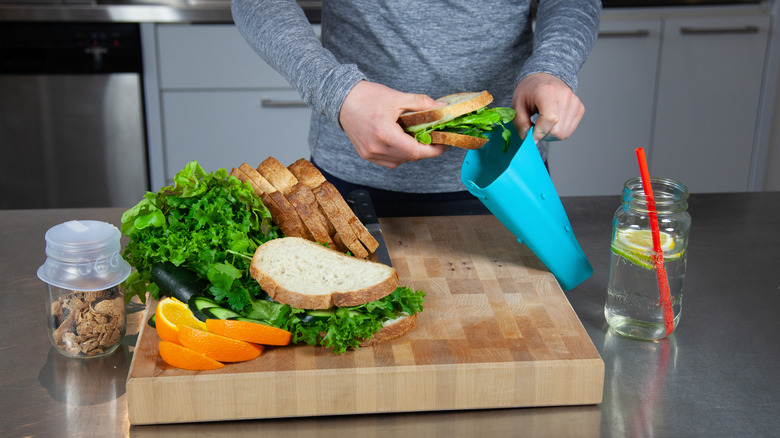How To Clean Reusable Food Storage Bags To Reduce Plastic Waste
It starts with good intentions: You swap your pile of sandwich baggies for sleek, reusable storage bags in the name of reducing waste. But after a week or two of storing chopped garlic, sticky marinades, or last night's lentil soup, those eco-friendly bags start to reek. The trick to making reusable silicone or PEVA bags actually reusable is all in the cleaning.
If the manufacturer says they're dishwasher-safe, the dishwasher is probably the most convenient and efficient cleaning method. You can keep the bag propped open, fold the edges over a few inches so it stands upright, then place it on the rack furthest from the heating element, and use a normal (not overly hot) wash cycle. Avoid turning the bags inside out, which can weaken the seams and seals.
For brands that aren't dishwasher-safe, hand-washing with a soft brush and air-drying on a rack works best. For those looking to get rid of stubborn smells, a paste of baking soda or a soak in diluted vinegar works wonders without breaking down the material. Much like washing your blender the right way or disinfecting a cutting board, it's less about obsessively scrubbing and more about building good habits to clean them right and reduce plastic waste.
Why reusable bags fail and how to make yours last longer
Reusable bags aren't cheap. And yet most people treat them like sturdier Ziplocs; overstuffing them, sealing them while still hot, or throwing them into chaotic freezers full of jagged edges and tumbling bags of frozen peas. The result? Ripped seams, warped shapes, and loose zippers that leak just enough vinaigrette to ruin your laptop bag.
To make them last, treat them less like a disposable and more like a kitchen tool. Use them for dry goods, sliced fruit, meal prep items, or as freezer bags. Skip the boiling soup or aggressively packed leftovers, though, because not everything needs to be bagged. Sometimes, an actual container is the better move, especially for heavy or liquid-based foods.
Longevity matters. Not just for your wallet, but for the whole point of switching in the first place. If your eco swap ends up in the trash after two months, it's not much of a win. Take care of them the same way you would your cast iron pan — with enough effort to make it last.

